Homefront: The Revolution – Beta Impressions
by Tim
|
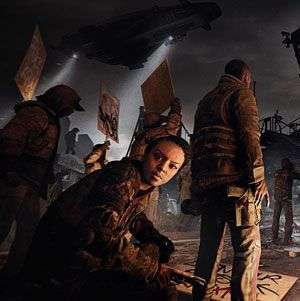 Considering it was by far the most well received half of the first Homefront, some may find it baffling to learn its 32 player online battles have been dropped for the shooter’s second outing. Then again, with the competitive FPS scene locked down harder than ever by the likes of Battlefield, Call Of Duty and Halo, to name but a few, is there any room left in the current landscape for a new Homefront to occupy? That’s been the thinking over at Dambuster Studios (formerly Crytek UK, previously Free Radical Design), who have concluded trying to muscle in with the shooter big boys is a near futile and largely unnecessary exercise. As a result, their upcoming sort-of-sequel, sort-of-reboot Homefront: The Revolution will not include a traditional online versus multiplayer. It will, however, alongside an open-world campaign set in a Korean occupied Philadelphia (which looks to share more in common with Far Cry than its more immediate military shooter peers) feature an all new four player co-op mode instead.
Considering it was by far the most well received half of the first Homefront, some may find it baffling to learn its 32 player online battles have been dropped for the shooter’s second outing. Then again, with the competitive FPS scene locked down harder than ever by the likes of Battlefield, Call Of Duty and Halo, to name but a few, is there any room left in the current landscape for a new Homefront to occupy? That’s been the thinking over at Dambuster Studios (formerly Crytek UK, previously Free Radical Design), who have concluded trying to muscle in with the shooter big boys is a near futile and largely unnecessary exercise. As a result, their upcoming sort-of-sequel, sort-of-reboot Homefront: The Revolution will not include a traditional online versus multiplayer. It will, however, alongside an open-world campaign set in a Korean occupied Philadelphia (which looks to share more in common with Far Cry than its more immediate military shooter peers) feature an all new four player co-op mode instead.
Resistance mode, as it’s known, will offer up a series of twelve missions (with more to follow post-launch) set after the events of the main campaign (spoilers – it looks like the Koreans don’t pack up and go home come the end). A recent Beta on Xbox One allowed us to sample three of these missions, which follow a ragtag bunch of resistance fighters as they attempt to loosen the grip of the Korean People’s Army (KPA, or “Norks” as they’re often referred to) over their home turf by way of shooting and exploding everything and everyone bearing the hostile occupying force’s insignia.
And it really is a ragtag bunch of fighters here. The first port of call after firing up the Beta was to modify your character’s appearance and then select a backstory for them from a list of multiple former professions, each one granting a bespoke skill for use out in the field. For instance, the Baseball Player can lob projectiles further, whereas the Auto Mechanic can scavenge extra crafting resources from drone and vehicle wreckages. Even if the background information itself doesn’t have any impact on the gameplay, as such, it’s a novel and more thoughtful way of personalising and fleshing out your avatar beyond merely customising the clothes they wear and the guns they carry.
Of course, Homefront: The Revolution has all that too. New gear, weapons and attachments can be bought in randomised crates from the Armoury with cash earned by completing missions, while XP is used to unlock new skills as you’d expect. There wasn’t a huge array of munitions available, although it’s unclear whether that’s down to Beta purposes, but the skill tree structure was of interesting note. Rather than the usual progression system of rising through the ranks, unlocking a set of fixed rewards to become the ultimate soldier, Homefront’s skill trees are divided into four different categories where you can mix and match up to nine various upgrades of your choosing, one of which is your base skill from your selected background.
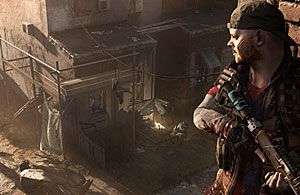 The Brains skill tree focuses on improving the effectiveness of crafted items, such as bombs, molotovs and hacking tools, while also decreasing the duration of crafting itself, reviving teammates and other interactions; Brawn toughens your character up, making them more damage resistant, increasing movement speed and upping inventory capacity; Fighter is all about weapon proficiency, allowing you to aim down sights and reload faster, and carry more ammo and an extra primary weapon; finally, Survivor is a more stealth-oriented selection, making you more difficult for enemies to spot and quietening your footsteps when going in for those silent kills.
The Brains skill tree focuses on improving the effectiveness of crafted items, such as bombs, molotovs and hacking tools, while also decreasing the duration of crafting itself, reviving teammates and other interactions; Brawn toughens your character up, making them more damage resistant, increasing movement speed and upping inventory capacity; Fighter is all about weapon proficiency, allowing you to aim down sights and reload faster, and carry more ammo and an extra primary weapon; finally, Survivor is a more stealth-oriented selection, making you more difficult for enemies to spot and quietening your footsteps when going in for those silent kills.
Each skill tree has four tiers to it, the next one unlocking after a certain number of upgrades from the previous tier have been purchased. However, with a maximum allowance of nine upgrades, you’ll have to specialise in one skill tree to ultimately unlock the fourth tier reward, which grants you the ability to deploy area-of-effect packages which replenish your teammates’ supplies and buff their stats (depending on which skill tree they’re tied to, of course). Luckily, you can create more than one fighter, meaning you’re able to have a character specialised in Brains, Brawn, Fighter and Survivor each, all of which can share the weapons and attachments you earn. You could have a Jack of all trades, master of none character if you so wished, but it’s ill-advised. These missions are hard – intentionally so according to Dambuster – and by spreading yourself too thinly you’re essentially reducing yourself to the lowest tier skills.
It doesn’t take long for that difficulty curve to make itself known. Ignoring Dambuster’s advice to start with the easiest difficulty setting, our four-man squad assembles for the first of the Beta’s trio of missions – a rain soaked, night-time set operation called Infiltration – on Normal, and within minutes of starting we’re all hopelessly gunned down. Reassessing and lowering the difficulty level down to Easy we deploy again, but still have a tough time and endure multiple restarts before seeing the mission through to completion. Health doesn’t regenerate for starters and, as in the first game, you can only carry small amounts of ammo, meaning you have to be careful when and where you shoot, and make every shot count. You can’t pick up dropped enemy guns either, as they’re fingerprint coded, but you can loot bodies for ammo by holding down X, which proves to be a serious pace killer (and while in the heat of battle can be an actual killer). It’s a small but poor design decision which has serious ramifications during play and needs to be addressed before the game ships.
Unfortunately, it’s far from Homefront’s biggest problem.
 We understand this is a Beta and expect a certain degree of roughness, but for a game only a few months away from release the low level of polish on show here is troubling. Controls are unresponsive, movement feels slow, the framerate constantly struggles to keep up, and graphical issues abound. This is one ugly looking game, not just technically but artistically too. Sure, the first Homefront was no looker, but it did have some colour in its art direction and a unique and engaging setting for a shooter. Homefront: The Revolution regrettably has neither, its version of Philadelphia largely reduced to rubble with nary any primary colours to contrast with the relentless greys and browns. For a game powered by CryEngine, we should expect better.
We understand this is a Beta and expect a certain degree of roughness, but for a game only a few months away from release the low level of polish on show here is troubling. Controls are unresponsive, movement feels slow, the framerate constantly struggles to keep up, and graphical issues abound. This is one ugly looking game, not just technically but artistically too. Sure, the first Homefront was no looker, but it did have some colour in its art direction and a unique and engaging setting for a shooter. Homefront: The Revolution regrettably has neither, its version of Philadelphia largely reduced to rubble with nary any primary colours to contrast with the relentless greys and browns. For a game powered by CryEngine, we should expect better.
As for the actual missions, they’re sadly not much to shout about either, standard objectives and predictable action making the least of the sandbox-style levels. The first one, the previously mentioned Infiltration, tasks you with stealing a couple of trucks from a KPA compound under the cover of rain and darkness. There’s more than one way to get into the compound, but an underground tunnel secluded in a nearby bombed-out building is the easiest and quietest way in. Once in and all hostiles have been dealt with, NPCs arrive on the scene to get behind the wheels, the mission culminating in a plodding escort sequence in which the trucks are repeatedly halted at several ambush points and you have to clear the way. It’s hardly a grand finale, its scripted nature providing little scope for different tactics, and the trucks’ short health bars – not to mention yours – often lead to frustration.
The second mission, Enemy At The Gates, gives you a much bigger sandbox to play in, tasking you with hacking into a duo of KPA communications arrays to pinpoint the location of an elite squad of Special Forces who’ve been causing problems for the resistance and are in need of assassinating. With the arrays hacked, you head off to your targets’ location on a motorcycle, which sadly isn’t nearly as exciting as it sounds, and while there is scope for stealthly takedowns once there (Homefront: The Revolution features an on-screen stealth indicator much like Far Cry), things usually descend into one big and loud bullet fest. Homefront’s shooting mechanics aren’t what you’d call fine-tuned at the moment, though, with some dodgy hit detection and lack of visual feedback keeping it firmly in the realms of average shooter fare. Being able to customise your weapon on the fly à la Crysis, adding scopes, silencers or even swapping out your assault-rifle components for those of a shotgun or sniper rifle instead, is a welcome feature, mind. With all targets dead, then, all that’s left of the mission is to reach the extraction point for another distinctly anticlimactic finish.
The final mission, A Las Barricadas, is perhaps the best of the bunch, but it’s also the shortest. Starting out as a reconnaissance mission, things quickly turn nasty as you’re called upon to hold off an assault against one of the resistance’s safe houses. After buying them enough time to evacuate the site, you’re given only a matter of seconds to make a mad dash to your escape route before the resistance blow it up behind you. It’s this kind of frantic action and overall sense of being part of a greater resistance movement that the other two missions lacked. We can only hope Dambuster have decided to showcase the weaker missions in the Beta, and that the others follow the lead of A Las Barricadas instead.
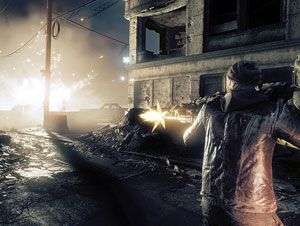 Being a Beta, we can, in all fairness, forgive the technical foibles if not quite the artistic choices on show, and as we all know a Beta isn’t necessarily representative of the current development of the game or the eventual finished product we’ll play. But even if the shooting is beefed up, the framerate locked and the graphics sharpened, among other fixes needed, the missions themselves seem very basic with little meat on their bones. There is potential for genuine depth here – these are not your typical run-and-gun shooting galleries but ruthless and desperate fights for survival set in roomy sandbox levels with various options available. It’s just what Dambuster have you doing in them and the way they play it out isn’t particularly inspiring.
Being a Beta, we can, in all fairness, forgive the technical foibles if not quite the artistic choices on show, and as we all know a Beta isn’t necessarily representative of the current development of the game or the eventual finished product we’ll play. But even if the shooting is beefed up, the framerate locked and the graphics sharpened, among other fixes needed, the missions themselves seem very basic with little meat on their bones. There is potential for genuine depth here – these are not your typical run-and-gun shooting galleries but ruthless and desperate fights for survival set in roomy sandbox levels with various options available. It’s just what Dambuster have you doing in them and the way they play it out isn’t particularly inspiring.
Equally uninspiring is the choice of setting. Whether it’s reduced to rubble or not, Philadelphia doesn’t immediately strike us as iconic a setting for a shooter as the first game’s San Francisco. Standing in ruin, it’s a bleak and dreary place to fight in, one that may not even feel worth fighting for. We can only hope the remaining nine Resistance mode missions, and indeed the campaign, have got some more environmental variety in store, because right now for our former baseball player turned freedom fighter, home isn’t where the heart currently is.
Last five articles by Tim
- Future Perfect
- A Thief's Alternative End
- Uncharted 4: A Thief’s End - Review
- Ratchet & Clank - Review
- Gears Of War 4 – Multiplayer Beta Impressions




















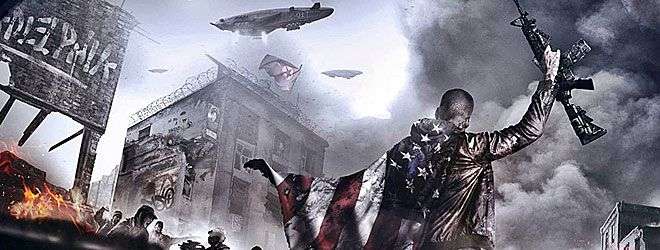
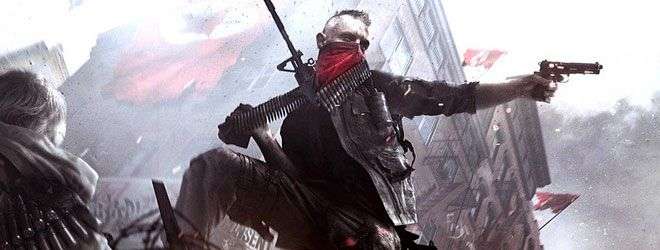






There are no comments, yet.
Why don’t you be the first? Come on, you know you want to!